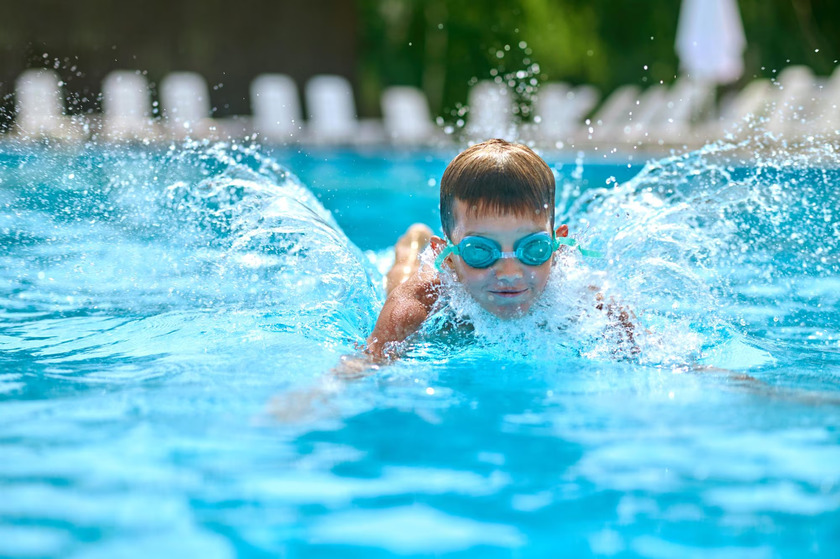Olympic swimming pools are deeper than you may expect. The Olympic Committee requires One meter. This is to prevent swimmers from being swept away by the waves that could arise if the pool were too shallow.
The “wake” of the swimmers is better absorbed, in my opinion, in deeper pools. Those trying to swim would have to contend with rougher water and longer lag times if depth were removed. Their speed is significantly impacted if the water is too shallow. The reflected wave can’t reach the surface if it’s three meters deep enough.
The pool’s return jets, which are built into the bottom of the lanes, are the second cause. The jets are typically installed on the sidewalls of a hotel or home pool. Recirculating a million gallons of water every four hours from jets, on the other hand, would produce a powerful current that may work in favor of or against the swimmers.
Reasons for Olympic Pools Become Deeper
This is due to the water’s resistance to motion and the pool’s bottom. There is a lot of drag on the outside lanes, so they take longer. Under the diving boards, the water must be at least 15 feet deep because of their height.
Olympic pools are deep for several reasons, including:
- Safety: The depth of the pool provides a safety margin for divers, reducing the risk of injury from diving into shallow water.
- Competitive fairness: A deep pool ensures that all competitors have equal conditions for performance, regardless of their diving ability or height.
- Competition rules: The depth of the pool is regulated by international swimming organizations and is part of the rules for Olympic competitions.
- Performance: A deeper pool allows for more powerful diving and more fluid swimming, enabling athletes to perform at their best and set new records.
- The deep pool ensures a safe, fair, and level playing field for Olympic competitors to showcase their skills.
What is the Size of an Olympic Pool?
Olympic swimming pools are a certain size. The length of the pool between the touch panels of the Automatic Officiating Equipment and the width of the pool must be at least 50 meters (164 feet) for Olympic competitions.
What is the Depth of an Olympic Pool?
In a private pool, the depth can vary from 1.0 to 2.0 m, depending on the purpose. A public diving pool can have a depth of up to 5.5 meters in the deep end. Children’s play pools range in depth from three to twelve meters.
Is It Possible to Heat an Olympic Pool?
It is quite risky to have a swimming pool that is either too hot or too cold, which can lead to overheating or even cardiac arrest. In addition, the temperature of a swimming pool may initially be unbearable, but as soon as you get moving, it becomes more pleasant. When you go for a run, this is about the same temperature as it is outside.
FINA regulates pool temperatures very strictly (Olympic competition must be 79 degrees, plus or minus one degree) and most competitive pools keep their temperatures between 77-82 degrees, but my experience has been that a wide range of pools have much wider temperature ranges than I’ve ever seen them.
How Deep Can a Swimmer Dive?
This means that the majority of divers are safe up to a depth of 60 feet. A depth of 20 feet (6.09 meters) is the maximum free diving depth for most swimmers. When exploring underwater reefs, experienced divers can safely dive to a depth of 40 feet (12.19 meters).
What is the Temperature of an Olympic Pool?
As a general rule of thumb, competitions require water temperatures of between 25 and 28 degrees Celsius, or 77 and 82.4 degrees Fahrenheit.
International water sports association FINA has said, however, that different water sports require slightly varied pool temperatures.
How High is an Olympic Dive?
The 10-meter platform is currently the highest diving platform in the Olympic competition. The 10m Platforms and synchronized Platform competitions, which are open to both men and women, feature this platform.
Why Do They Use a Horn in an Olympic Pool?
When there’s no crowd noise, it’s just an identifiable noise that a team/coach may generate to support their athlete. While everyone is yelling and cheering, It sticks out in the crowd.” That’s how teams show their athletes they have a large following by putting out social media posts.
Final Words
When it comes to protecting swimmers from waves, Olympic-sized swimming pools are so deep. If you’ve ever swum in turbulent water, you know that it’s considerably more challenging and slows you down. For the Olympics, deep pools were essential to keep swimmers safe and improve their abilities.
